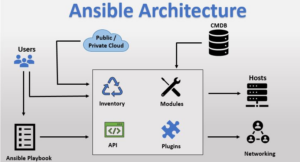Ansible Automation Platform and Red Hat OpenShift are both leaders in The Forrester Wave and are built on leading open-source projects in Ansible and Kubernetes, respectively. Launched in July 2020, Red Hat Advanced Cluster Management helps enterprises better manage and scale OpenShift clusters across the hybrid cloud, lending management muscle to the industry’s leading enterprise Kubernetes platform. Now, Ansible Automation Platform and Red Hat Advanced Cluster Management can work hand-in-hand, enabling enterprises to take advantage of the technologies already in use and refine them for a cloud-native future.
Connecting traditional and hybrid cloud environments with modern automation tools Application modernization is among today’s top IT priorities. According to Gartner, “by 2022, only 40% of container management software offerings available in 2019 will still be competitive/or exist, causing many current product decisions to be tactical.” Red Hat OpenShift provides a powerful, scalable platform for this transformation. Many organizations, however, cannot afford to simply leave existing IT systems behind, given the investments and critical workloads based on these resources. With this in mind, many IT teams are forced to split technology stacks and silo teams to address these disparate workflows, each requiring separate tools and strategies, leading to growing complexity and friction.
The integration between Ansible Automation Platform and Red Hat Advanced Cluster Management aims to address these pain points in enterprise IT organizations by streamlining the toolsets and “handoffs” between traditional and cloud-native technologies. Red Hat Advanced Cluster Management addresses the need for cloud-native management and monitoring. When application level or traditional IT workflows are needed, it acts as a control plane across Red Hat OpenShift clusters to trigger Ansible Automation Platform capabilities, such as deploying system updates, configuring load balancers, scaling server resources and more. The result is a single workflow to manage complex hybrid cloud environments without forcing organizations to choose between their IT needs in the here and now and those that they may require for a digital future.
As part of the integration between the two technologies, Red Hat takes advantage of OpenShift’s Kubernetes Operator foundation to further IT automation in hybrid cloud environments. Kubernetes Operators make it easier to run applications at-scale across OpenShift deployments, wherever they may exist, and with a Resource Operator for Red Hat Advanced Cluster Management, the technology can call on Ansible Automation Platform to execute tasks more efficiently outside of the Kubernetes cluster.

